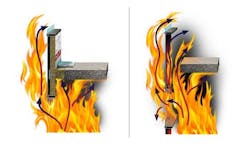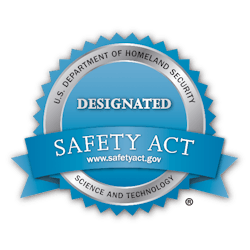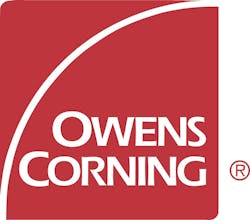6 Design Principles to Support Life Safety in the Extreme
From the pandemic and politics to fires and flooding, 2020 may best be remembered as a year of extremes. Designing for the extreme is essential when it comes to supporting life safety in high-rise structures. Limited pathways for egress, the vertical scale of high-rise buildings, and limits on how far first responders’ ladder trucks can ascend a building’s exterior all present challenges during rescue efforts. Specifying materials that address these inherent challenges is part of a holistic approach to designing for life safety in the event of a commercial building fire.
3 Life Safety Strategies for Commercial Buildings
A three-pronged strategy defends against the extreme risks commercial building fires present for occupants and first responders alike. Detective systems represent the first strategy. These systems include alarms that alert occupants and first responders to smoke, fire, and other hazards. The second strategy includes active systems – such as sprinklers – that serve to slow or extinguish a fire. The third strategy is compartmentation, which includes passive systems. Compartmentation focuses on containing a fire to its room of origin, thus slowing its spread. Unlike detective and active systems, compartmentation is not dependent on a triggered mechanism to deploy during a fire. Once properlyPerimeter fire containment (PFC) systems provide passive protection in a key area of concern–the commercial building’s perimeter. A void at the junction of the fire-rated floor assembly and the non-rated curtain wall presents a risk for flames or hot gases to spread upward, propagating the fire. By addressing this void, PFC systems deliver a compartmentation strategy that supports the most valuable of commodities during rescue efforts–time for egress. The specification of a rated and listed assembly – such as UL® or Intertek – is critical when selecting a PFC system. Tested and listed systems address six design principles that work together to defend against risks such as PFC system failures.
6 Essential Design Principles for Perimeter Fire Containment
Overlooking even one of the following design components can compromise the stability of the assembly and present a risk for premature failure of the entire PFC system. The six essential elements are:
- Mineral wool insulation designed for perimeter fire containment: The fire-resistant properties of mineral wool have earned it a reputation as a go-to material in PFC assemblies. In testing conditions conducted under ASTM E2307, Standard Test Method for Determining Fire Resistance of Perimeter Fire Barriers Using Intermediate-scale, Multistory Test Apparatus mineral wool remained fully intact and provided a barrier to the passage of fire at temperatures greater than 1,800°F for F Ratings up to 3 hours. However, not all types of mineral wool provide the same level of fire resistance and manufacturers formulate this material to support different performance properties–for example, acoustics, moisture management, or fire resistance. The chemistries and technologies used during manufacturing are essential to delivering fire resistance. Certification by a third-party organization such as UL® or Intertek assures the material meets requirements for meeting the building code requirements per ASTM E 2307 testing.
- Reinforcing curtain wall insulation: If insulation in the curtain wall is not reinforced, the insulation may bow, creating a gap and permitting flames or hot gases to spread to the floor above. Safing insulation is typically installed under 25-30 percent compression between the curtain wall insulation and the floor slab. This ratio provides a tight seal against internal fire propagation.
- Mineral wool mechanical attachments: If a material is not secure within the assembly, it will not deliver the protection it was engineered to provide. A positive mechanical attachment, such as that achieved with a screw or weld approach, will assure securement of the PFC system under the turbulence caused by fire conditions.
- Compression-fit safing: A tight seal at the perimeter void is key to preventing fire spread. Proper compression, as outlined in the UL/Intertek PFC system is critical to maintaining a barrier at the perimeter of the building. Even a gap of 1/32 of an inch can permit hot gasses on a lower floor to pass through the safe-off joint and ignite combustibles on the floor above.
- Mullion protection with mineral wool insulation: Testing has demonstrated that the extreme heat in a burning building produces temperatures well over 1,800°F. Heat sensitive building materials, such as aluminum framing will melt if left unprotected. Testing shows that aluminum melts just nine minutes into a fire at 1,220°F. Therefore, protection must be included in the design. It should be noted that the framing members are the very elements in which the curtain wall insulation is attached. Mineral wool mullion cover insulation, tested to ASTM E 2307, is essential to protecting aluminum framing’s interior facing and keeping it from melting and allowing the PFC system to fall away during a fire.
- Smoke barrier: Suffocating smoke is the most lethal component of a fire. And, as noted above, the moving environment that occurs during a fire can result in gaps that allow gases to infiltrate even very small gaps or cracks. All rated PFC systems include a fluid elastomeric sealant. Applied wet, these sealants dry to a rubbery consistency that can adapt to likely joint movement during a fire, helping seal off smoke.
Extreme Protection for Architects’ Reputations
While protecting occupant lives will always be the first priority in a fire, architects must also manage liability risk. The Support Antiterrorism by Fostering Effective Technologies Act of 2002 (SAFETY Act) was created by the Department of Homeland Security (DHS) and provides legal liability protections for providers of Qualified Antiterrorism Technologies (QATTS) that could help save lives in the event of a terrorist attack. The protection covers all stakeholders, including building owners, architects, curtain wall manufacturers, firestop manufacturers, and firestop installers. In 2017, Owens Corning® Thermafiber® PFC solutions were deemed by the DHS to meet the standards for designation under the SAFETY Act.
As the world continues to see more extreme weather events, architects must consider strategies that support resilience and performance even in extreme weather. Material performance – including selection of the proper mineral wool – can support life safety in commercial buildings. With more than a half-century of experience in evaluating PFC assemblies, the Thermafiber Insolutions® team can support architects in specifying assemblies that stand up to third-party testing conducted in extreme conditions.
Phone: 1-800-GETPINK
Email: [email protected]
Website: www.owenscorning.com


